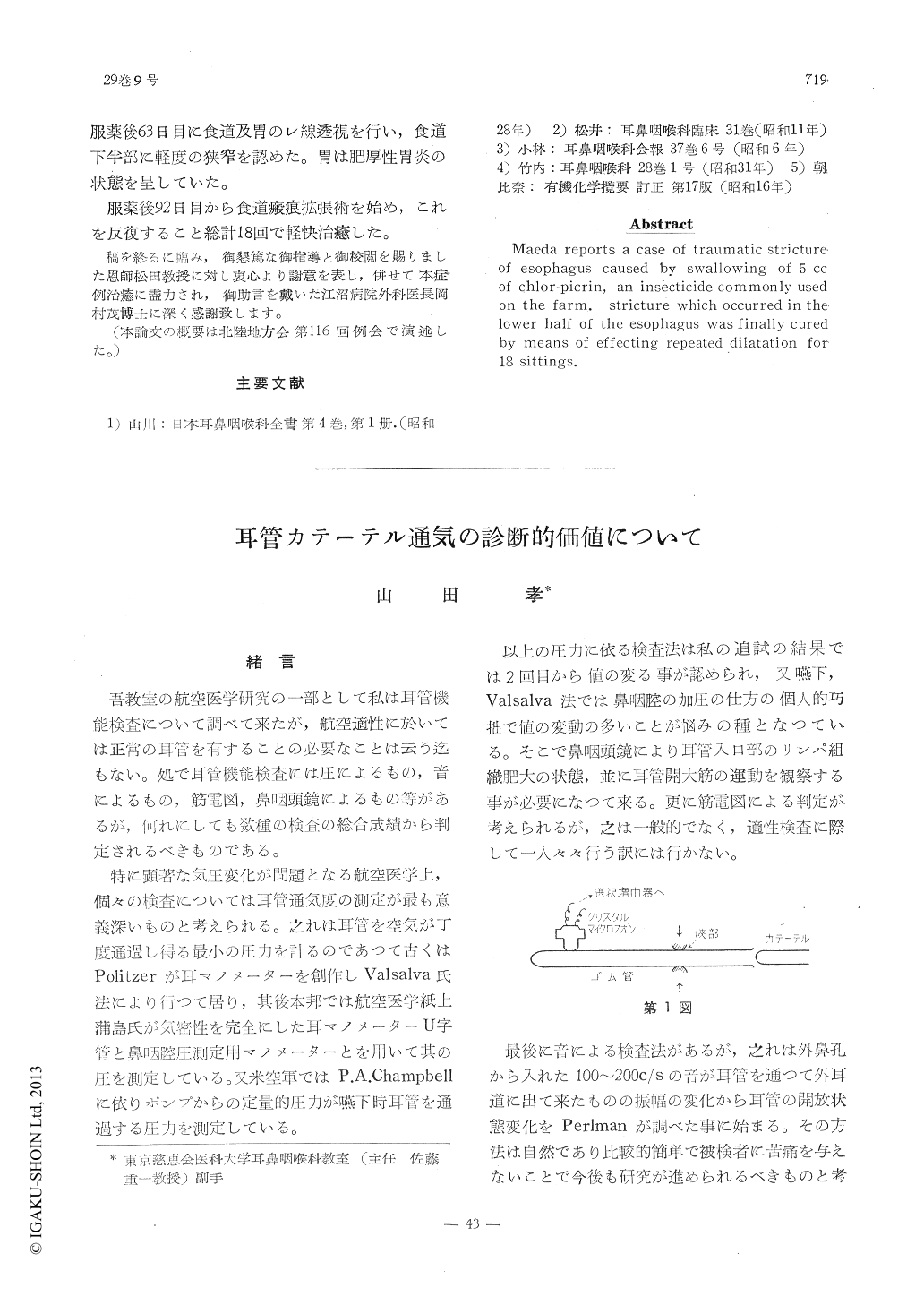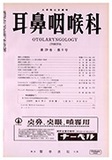- 有料閲覧
- 文献概要
- 1ページ目
緒言
吾教室の航空医学研究の一部として私は耳管機能検査について調べて来たが,航空適性に於いては正常の耳管を有することの必要なことは云う迄もない。処で耳管機能検査には圧によるもの,音によるもの,筋電図,鼻咽頭鏡によるもの等があるが,何れにしても数種の検査の総合成績から判定されるべきものである。
特に顕著な気圧変化が問題となる航空医学上,個々の検査については耳管通気度の測定が最も意義深いものと考えられる。之れは耳管を空気が丁度通過し得る最小の圧力を計るのであつて古くはPolitzerが耳マノメーターを創作しValsalva氏法により行つて居り,其後本邦では航空医学紙上蒲島氏が気密性を完全にした耳マノメーターU字管と鼻咽腔圧測定用マノメーターとを用いて其の圧を測定している。又米空軍ではP.A.Champbellに依りポンプからの定量的圧力が嚥下時耳管を通過する圧力を測定している。
Yamada finds that, by means of selectoject, the tone of auditory tube catherterization to be including to a considerable extent the tones that may be up to 2000 cps. At this tonal frequency it may be easily influenced by external variables such as caliber diffe-rences of eustachian tubes, a factor which for diagnostic auscultation in catherterization may become highly important. It is revealed, however, the otoscopes employing the usual gummy material for their construction have a tendency to absorb tones whose frequency range above 800 cps. And, in order to avoid this difficulty as technical drawbacks, the use vinyl plastics that allow passage of tones up to 2,000 cps.without hinderance is highly recommended by the author for the material in the construction of the instrument.

Copyright © 1957, Igaku-Shoin Ltd. All rights reserved.


